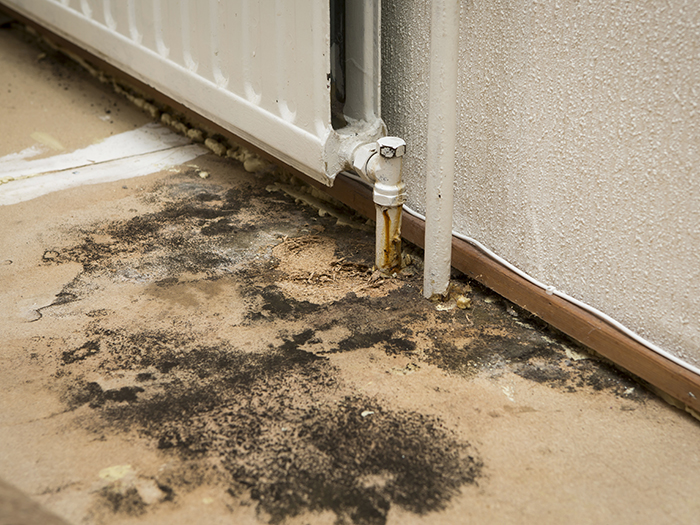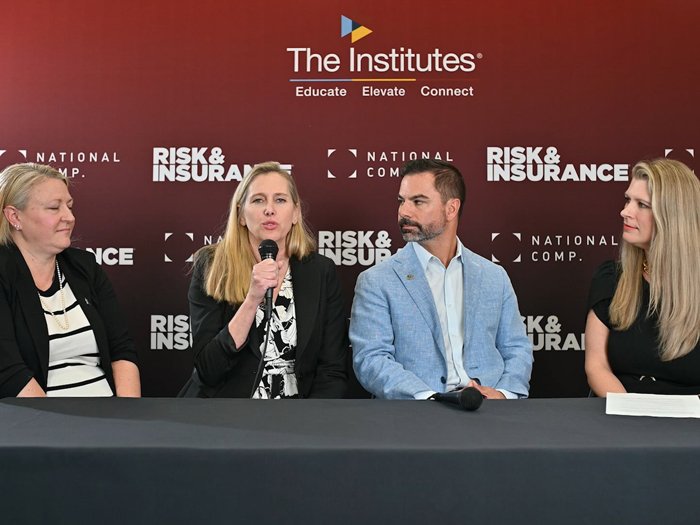Sponsored Content by Ironshore
3 Lessons to Help Real Estate Companies Avoid Million-Dollar Mold Remediation

Mold is not a new environmental exposure, but it is expanding. Claim frequency and severity have been on the rise for the past several years, and losses are impacting industries outside of the traditional buyers of pollution legal liability policies.
“Mold has always been an environmental loss leader, but over the last couple of years the impact has increased dramatically,” said Toby Smith, Head of Environmental, Ironshore. “It has really hit all industries in the real estate sector, but we’ve seen a big increase in claims from the hotel and hospital worlds.”
Mold remediation claims coming from hospitality and healthcare companies typically look quite different from claims coming from real estate entities managing residential or small commercial properties — because the latter units are usually renovated individually as they become available, whereas the scale is much larger with hospitals and hotels.
In a residential building, for example, mold issues are remediated on a unit-by-unit basis as tenants bring them to the management company’s attention. As such, the management company is less likely to face a major unplanned financial impact. Hotels and hospitals, on the other hand, tend to tackle maintenance issues all at once.
“We often find that hotels defer minor maintenance issues until a planned renovation, and that the lifespan of a hospital patient room is longer than in other real estate segments. Both factor into encountering larger mold issues during planned renovation which have aggregated over time without being visible to the property managers. They may perform no renovations for seven or eight years, then shut down an entire wing or floor to work on all of those rooms at once,” Smith said.
When mold is discovered in the midst of major renovation, it can add millions to the project cost and quickly surpass the deductible.
“We have seen claims where mold remediation has added $3 – $5 million to a $7 million renovation — an expense that was unbudgeted for,” Smith said. “For these large projects, mold can have a significant impact on the bottom line and the profit of that location.”
Though hotels and hospitals get hit harder by the cost of mold cleanup, their risk is not fundamentally different than that faced by real estate entities. The larger scale of their mold losses, rather, throws into relief some proactive risk management steps that smaller real estate companies can undertake to avoid the same fate.
Here are some lessons residential and small commercial real estate risk managers can learn from hospitality’s and healthcare’s growing mold problem:
1. A meaningful O&M plan can help avoid a major renovation.

Toby Smith, Head of Environmental, Ironshore
Most property managers will say they have an operation and maintenance (O&M) plan in place, but that’s no guarantee that staff are aware of it or know how to implement it.
“It’s so important to have a proper O&M plan for mold and water intrusion so you can address these issues in real time before they accumulate into something that will be expensive and time-consuming to resolve,” Smith said.
A strong O&M plan will outline specific actions to take in response to specific scenarios. Those scenarios can be anything from a toilet overflow to a pipe leak to something more serious like a flooded basement. It’s also critical that maintenance staff and front-line managers are familiar with the plan and know how to access it when a problem arises.
“It’s not enough to draft up a plan, and then file it away in a folder. You have to hold staff accountable for implementing the plan,” Smith said. Being proactive at the first sign of water damage can avoid the extensive renovations needed down the road when mold is allowed to grow for years at a time.
2. Preparing for catastrophe mitigates the long-term financial impact of water damage.
A recent string of catastrophes may be one driver behind the spike in mold claims. The triple-punch of Harvey, Irma and Maria, for example, not only caused a great deal of water damage but also likely lead to the discovery of pre-existing mold when repairs were underway for other storm-induced physical damage.
Hotels and hospitals may have the deep pockets to procure the equipment and contractors they need quickly to dry out water-damaged materials and prevent long-term damage, but smaller real estate companies can still copy their crisis response plans to minimize storm damage.
“Mold does not start to grow until 48 to 72 hours after water damage, even in a damp environment,” Smith said. “You do have an initial opportunity to start drying things out.”
Even if a facility can’t get first dibs on a powerful generator or drying equipment, it’s worthwhile to establish a relationship with a vendor who can supply some type of drying equipment within a few days after a catastrophe.
“Even if you don’t get the equipment until five days after the event, you’ll still be in better shape than if you have to wait a month because you don’t have any type of plan in place,” Smith said.
Additionally, waiting to address the water damage under the rationalization that an insurance claim will cover the cost of cleanup anyway does not account for the financial impact of business interruption. Even if direct loss of revenue is covered, there may be longer-term repercussions suffered — such as permanently losing customers — if your business is out of commission for months at a time.
“Mold cleanup may mean ripping down drywall to remediate and rebuild. It can take weeks or months. Even if you have insurance, it’s in everybody’s best interest to get your asset up and running as soon as possible,” Smith said.
3. A comprehensive environmental policy provides access to risk management resources.

A broad environmental policy will typically cover the cost of remediation, third-party claims of bodily injury, and in most cases, revenue lost during business interruption. But a strong environmental policy will provide much more than indemnification. Insureds often can benefit from value-added risk management services.
That includes sample O&M plans and access to resources that help companies customize or build their own. Or discounted rates for preferred crisis response contractors.
“Insurer-recommended contractors are a huge benefit. Choosing a contractor with a specific skillset, rather than a generalist, usually means that the work is done to a higher standard of quality and it gets done faster. Choosing the wrong contractor can result in even bigger claims down the line, because there’s greater likelihood for defects,” Smith said.
A large hotel or hospital likely has the plans and contracts they need in place because their business interruption costs can be significant, and they recognize the need to act quickly. But a real estate organization managing an apartment building or a few small offices can gain the same advantage of speed by utilizing their carrier’s vendor networks.
The Right Insurer Brings Risk Management Value
An insurer with expertise in environmental hazards represents a deep risk management resource for any organization with property exposures. “Having an experienced claims staff that can guide you through the process and ensure you’re connected to the right remediation resources is very important,” Smith said.
Ironshore’s claims team members have an average of more than 15 years of experience. Their integration with Liberty Mutual also unlocks access to a wide array of loss control services, including crisis response.
“We can facilitate the connection between our clients and emergency response vendors who will help them proactively strengthen their defenses or develop a response plan,” Smith said. Ironshore’s Site Pollution Incident Legal Liability Select (SPILLS) policy also covers emergency response expenses without a sublimit.
In addition to remediation, the policy also covers business interruption, waste disposal activities, third party bodily injury and property damage, and includes coverage for pre-existing and new conditions. This is especially important with regard to mold since it can grow behind walls undetected for long periods, and may already be present in recently acquired properties. When it is discovered, having both the insurance protection and response plan in place will ensure you’re ready.
To learn more about Ironshore’s environmental coverages, visit http://www.ironshore.com/usa/environmental/c10.
This article was produced by the R&I Brand Studio, a unit of the advertising department of Risk & Insurance, in collaboration with Ironshore. The editorial staff of Risk & Insurance had no role in its preparation.










